Puzzles have long been recognized as an invaluable tool for children’s development, engaging young minds in a fun and challenging way. These intriguing brain-teasers come in various forms, ranging from jigsaw puzzles to crosswords, riddles, and logic games.
While they may seem like mere entertainment, puzzles offer much more than just a source of amusement. In fact, they play a crucial role in enhancing cognitive abilities, fostering problem-solving skills, and promoting overall mental development in children.
The significance of puzzles for kids extends beyond their entertainment value. As children engage with puzzles, they are presented with opportunities to develop and refine various essential skills. One of the most evident benefits is the enhancement of cognitive abilities, including critical thinking, logical reasoning, and spatial awareness.
By manipulating puzzle pieces or deciphering clues, children learn to analyze information, make connections, and think strategically. These skills not only aid in puzzle-solving but also have far-reaching implications in other areas of life, such as academic performance and real-world problem-solving.
Additionally, puzzles serve as a platform for improving fine motor skills and hand-eye coordination. When children grasp and maneuver puzzle pieces, their fine motor skills are put to the test. This physical interaction promotes the development of dexterity and precision, enabling children to refine their motor control and coordination.
Furthermore, puzzles encourage patience and perseverance as children encounter challenges and setbacks during the solving process. They learn the value of persistence, problem decomposition, and systematic thinking, all of which are vital life skills.
Puzzles have a significant impact on children’s social and emotional development. When solving puzzles with others, whether it’s friends, siblings, or parents, children engage in cooperative play and teamwork. They learn to communicate, share ideas, and collaborate towards a common goal.
This fosters social interaction, builds relationships, and instills a sense of achievement and pride upon successfully completing a puzzle together. Moreover, puzzles can also be used as a tool for self-reflection and stress relief, providing children with a calming and immersive activity that promotes mindfulness and concentration.
Table of contents
Benefits of Puzzles for Kids
In a world that constantly challenges our intellect and problem-solving abilities, puzzles serve as more than just a source of entertainment. They have long been recognized as valuable tools for enhancing cognitive skills, boosting problem-solving abilities, and fostering critical thinking.
Whether it’s a jigsaw puzzle, crossword, sudoku, or even a complex riddle, engaging with puzzles can have profound benefits for individuals of all ages. In this blog post, we will explore how puzzles can positively impact cognitive development and provide practical ways to incorporate them into our daily lives.
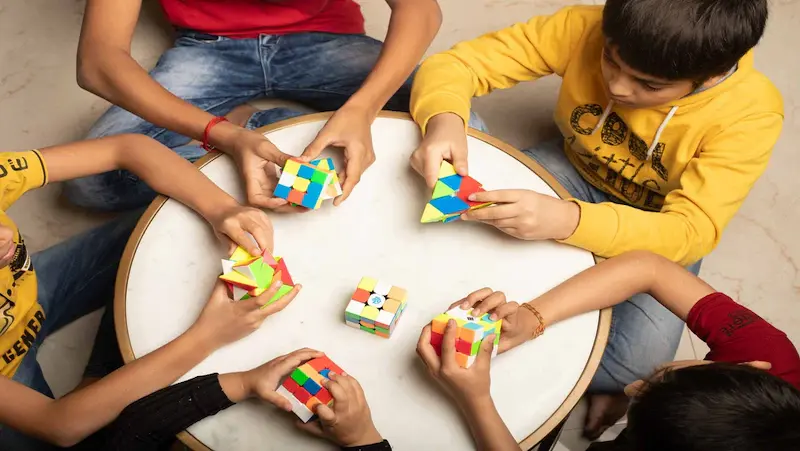
Cognitive Skills
Puzzles are remarkable for their ability to stimulate and enhance various cognitive skills. Solving puzzles requires the brain to engage in complex mental processes, leading to the development and improvement of crucial cognitive abilities.
Here are a few key ways puzzles can help:
a) Memory: Puzzles often require us to remember specific patterns, colors, shapes, or clues. Regular engagement with puzzles can improve both short-term and long-term memory capabilities.
b) Attention to Detail: Successfully solving a puzzle necessitates a keen eye for detail. This sharpens our ability to observe and identify subtle patterns, enhancing our overall attention to detail in everyday life.
c) Spatial Reasoning: Puzzles like jigsaw puzzles or tangrams enhance spatial awareness and reasoning. By manipulating and fitting pieces together, individuals develop a deeper understanding of spatial relationships, which can be invaluable in fields such as mathematics, engineering, and design.
Problem-Solving Abilities
One of the primary benefits of puzzles lies in their ability to hone problem-solving skills. By presenting us with challenges and obstacles, puzzles compel us to think critically and devise strategies to overcome them.
The following are ways in which puzzles cultivate problem-solving abilities:
a) Analytical Thinking: Puzzles often require breaking down complex problems into smaller, more manageable parts. This analytical thinking approach encourages us to evaluate information systematically, identify patterns, and find logical solutions.
b) Creativity: Puzzles stimulate the creative side of our brain, encouraging us to think outside the box and explore alternative approaches. This ability to generate multiple solutions to a problem fosters creativity and flexibility in our thinking.
c) Trial and Error: Puzzles provide a safe space for trial and error experimentation. The iterative process of attempting different strategies and adjusting them based on feedback builds resilience and adaptability in problem-solving.
Critical Thinking
Puzzles are excellent tools for nurturing critical thinking skills, which are crucial for effective decision-making and reasoning.
Here’s how puzzles promote critical thinking:
a) Logic and Deductive Reasoning: Many puzzles, such as logic puzzles or riddles, require us to apply deductive reasoning and logical thinking to arrive at the correct solution. Engaging with these puzzles sharpens our ability to draw conclusions based on evidence and reason systematically.
b) Decision Making: Puzzles often present us with multiple possibilities and choices. By carefully evaluating each option and predicting potential outcomes, we exercise critical thinking skills that directly translate into real-life decision-making scenarios.
c) Problem Evaluation: Puzzles encourage us to critically evaluate problems and assess different perspectives. This helps develop a habit of considering multiple angles, analyzing information objectively, and making informed judgments.
Types of Puzzles for Different Age Groups
Puzzles have long been a favorite pastime for people of all ages. They not only provide entertainment and relaxation but also stimulate the mind, enhance problem-solving skills, and promote cognitive development.
In this blog post, we will delve into the fascinating world of puzzles and explore various types suitable for different age ranges. From jigsaw puzzles to word puzzles and number puzzles, let’s discover the diverse array of challenges that await us! Check out Free games for kids.
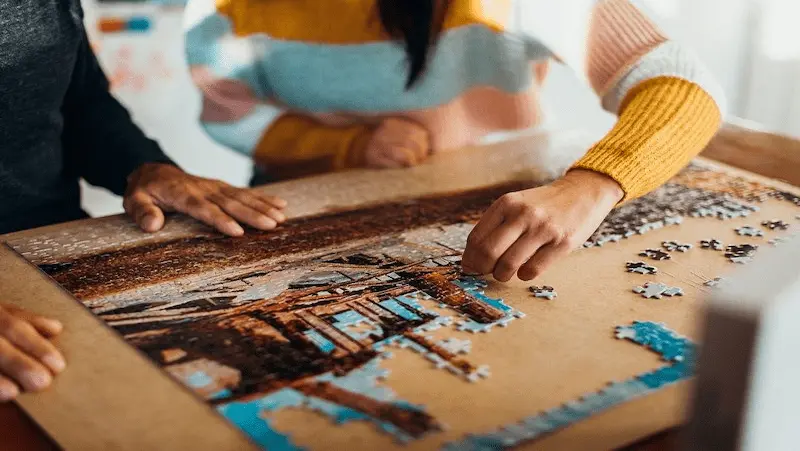
Jigsaw Puzzles
Jigsaw puzzles are timeless classics loved by individuals of all ages. They come in varying levels of difficulty, making them suitable for children, teenagers, adults, and seniors alike. For younger children, jigsaw puzzles with larger pieces and fewer overall pieces are recommended.
As they grow older, they can progress to more complex puzzles with smaller pieces and intricate designs. Jigsaw puzzles foster spatial awareness, hand-eye coordination, and patience, making them an excellent choice for all age ranges.
Word Puzzles
Word puzzles, such as crosswords, word searches, and anagrams, offer a stimulating challenge for language enthusiasts. These puzzles are particularly beneficial for teenagers and adults, as they enhance vocabulary, improve cognitive skills, and promote creative thinking.
Crosswords can be tailored to different difficulty levels, ensuring that they cater to a wide range of age groups. Word searches are excellent for younger children, as they help develop letter recognition and improve spelling.
Number Puzzles
Number puzzles, including Sudoku, math riddles, and logic puzzles, engage the analytical and logical thinking abilities of individuals. Sudoku, with its grid-based layout and number placement rules, appeals to teenagers and adults who enjoy mental arithmetic and logical problem-solving.
Math riddles and logic puzzles, on the other hand, challenge individuals to think outside the box and apply mathematical concepts to arrive at solutions. These puzzles are suitable for teenagers and adults who enjoy a mental workout.
Mechanical Puzzles
Mechanical puzzles involve the physical manipulation of objects to find a solution. They come in various forms, such as Rubik’s Cube, wooden puzzles, and brainteasers. Mechanical puzzles are popular among all age ranges, as they provide a hands-on experience and a sense of accomplishment when solved.
They enhance fine motor skills, critical thinking, and patience. While some mechanical puzzles may be more challenging for younger children, there are simpler versions available to cater to their abilities.
Strategy Puzzles
Strategy puzzles, such as chess, checkers, and logic games like “Rush Hour,” challenge individuals to think strategically and plan ahead. These puzzles are suitable for teenagers and adults who enjoy competitive and thought-provoking games for kids.
Strategy puzzles help improve problem-solving skills, critical thinking, and decision-making abilities. They also provide a social aspect, as they can be played with friends and family, fostering healthy competition and social interaction.
Choosing the Right Puzzles for Your Kids
Puzzles are not only a fun and engaging way for children to pass the time but also provide numerous educational benefits. They can help develop problem-solving skills, enhance cognitive abilities, and promote critical thinking.
However, as a parent, it’s important to choose age-appropriate puzzles that align with your child’s developmental stage. This blog post aims to provide tips and guidelines for parents on selecting puzzles based on factors like complexity, themes, and safety.
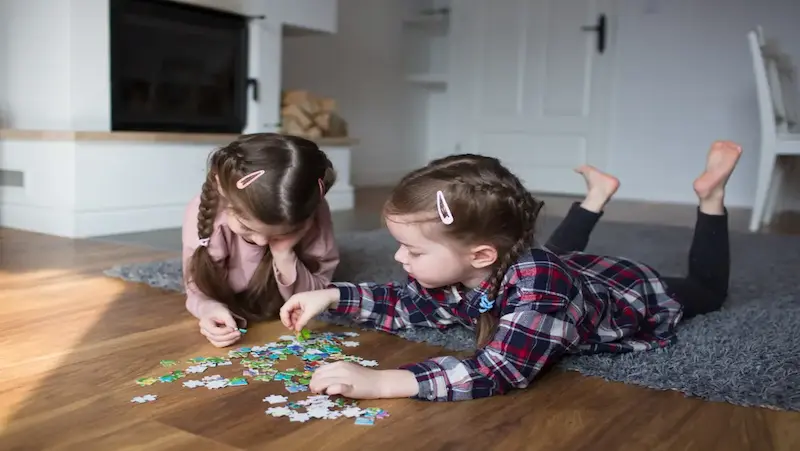
Consider Complexity Levels
One of the key factors to consider when choosing puzzles for your child is their complexity level. Age recommendations provided by puzzle manufacturers can serve as a useful starting point, but it’s essential to understand your child’s abilities and skills.
Consider the following guidelines:
a) Start with simple puzzles: For young children or beginners, opt for puzzles with fewer pieces and larger sizes. These puzzles often have simpler designs and are easier to manipulate, helping build confidence and basic problem-solving skills.
b) Gradually increase difficulty: As your child progresses, gradually introduce puzzles with more pieces and complex designs. This challenges their cognitive abilities and fosters perseverance, concentration, and spatial awareness.
c) Encourage age-appropriate challenges: While it’s important to challenge your child, avoid puzzles that are too difficult. Frustration can discourage their interest. Strike a balance by selecting puzzles that offer a moderate challenge, allowing them to experience a sense of accomplishment upon completion.
Explore Themes and Interests
Puzzles come in a wide range of themes, including animals, nature, fantasy, famous landmarks, and characters from popular movies or cartoons. Considering your child’s interests and preferences can make puzzle time more engaging and enjoyable.
Here are some tips:
a) Reflect on their hobbies and passions: Choose puzzles featuring subjects that align with your child’s interests, such as dinosaurs, princesses, sports, or outer space. This connection to their passions can enhance motivation and foster a love for puzzles.
b) Educational opportunities: Look for puzzles that offer educational value alongside entertainment. Themes like world maps, solar systems, or historical events can help your child learn about the world while assembling the pieces.
c) Variety and rotation: Introduce a variety of puzzle themes to expose your child to different subjects and broaden their horizons. Rotate the puzzles periodically to maintain interest and prevent monotony.
Prioritize Safety
Ensuring puzzle safety is paramount, particularly for younger children who tend to explore objects with their mouths.
Consider the following safety guidelines:
a) Non-toxic materials: Opt for puzzles made from non-toxic materials, preferably labeled as child-safe. This ensures that even if your child comes into contact with the puzzle pieces, they won’t pose any health risks.
b) Avoid small parts: For younger children, avoid puzzles with small parts that could present a choking hazard. Ensure the puzzle pieces are large enough for their age group and don’t have sharp edges.
c) Supervision is key: While puzzles are generally safe, it’s always recommended to supervise young children during playtime to prevent any potential accidents or misuse.
Introducing Puzzles to Young Children
As parents, we strive to provide our children with a solid foundation for learning and development. One powerful tool that often goes overlooked is a puzzle. Puzzles offer a plethora of benefits for toddlers and preschoolers, ranging from cognitive development to problem-solving skills.
However, introducing puzzles in a way that engages and excites young minds requires some thoughtful strategies. In this article, we will explore practical suggestions for parents on how to introduce puzzles to toddlers and preschoolers, creating a positive learning environment and fostering engagement.

Start with Simple and Age-Appropriate Puzzles
When introducing puzzles to young children, it’s important to choose puzzles that match their developmental stage. Begin with simple, chunky puzzles with large, easy-to-grasp pieces that fit into corresponding cutouts. This helps toddlers develop their fine motor skills and hand-eye coordination, building confidence in their ability to solve puzzles.
Create a Dedicated Puzzle Space
Designating a specific area for puzzles sends a powerful message to your child that puzzle time is special and important. Set up a small table or an area on the floor with a comfortable mat where your child can spread out the puzzle pieces and work undisturbed. This dedicated space creates a positive association with puzzles and reinforces a sense of focus and concentration.
Demonstrate and Assist
Children learn by observing and imitating. Show your child how to solve a puzzle by starting with a few pieces and gradually adding more. Talk about the process, highlighting colors, shapes, and patterns. Offer gentle assistance when needed, guiding their hand or suggesting strategies, but allow them to figure things out independently as much as possible. This approach builds problem-solving skills and boosts their self-confidence.
Make it Playful and Fun
Engage your child’s imagination and creativity by incorporating storytelling and play into puzzle time. Encourage them to describe the picture they are creating or make up a story about the characters on the puzzle.
You can even create a treasure hunt by hiding puzzle pieces around the room and letting them find and assemble them. Making puzzles a fun and interactive experience will enhance their engagement and motivation to solve more.
Gradually Increase Complexity
As your child gains proficiency in solving puzzles, gradually introduce more challenging ones. Look for puzzles with a higher number of pieces or those that require problem-solving skills, such as jigsaw puzzles with irregular shapes.
This gradual progression helps children develop patience, perseverance, and critical thinking abilities, preparing them for more complex challenges in the future.
Rotate and Expand Puzzle Collection
To sustain your child’s interest in puzzles, rotate their collection periodically. Introduce new puzzles with different themes, designs, and difficulty levels. This variety keeps puzzle time exciting and prevents boredom.
Additionally, consider involving your child in choosing puzzles during shopping trips or browsing for online games for kids. Their involvement creates a sense of ownership and anticipation for the new additions to their puzzle collection.
Celebrate Achievements
Acknowledge and celebrate your child’s efforts and achievements in solving puzzles. Offer praise and encouragement for their perseverance and problem-solving skills. Consider creating a simple reward system, such as collecting stickers or stars for each completed puzzle. This positive reinforcement reinforces their motivation and fosters a sense of accomplishment.
Incorporating Puzzles into Everyday Routine
Parents play a vital role in shaping their children’s learning experiences. By incorporating educational activities into their daily routines, parents can cultivate a love for learning while making it enjoyable for their children.
One such activity that offers numerous cognitive and developmental benefits is puzzling. Puzzles stimulate critical thinking, problem-solving skills, and creativity. In this blog post, we will explore exciting ways parents can integrate puzzles into their children’s daily activities, creating a stimulating environment that fosters both learning and fun.
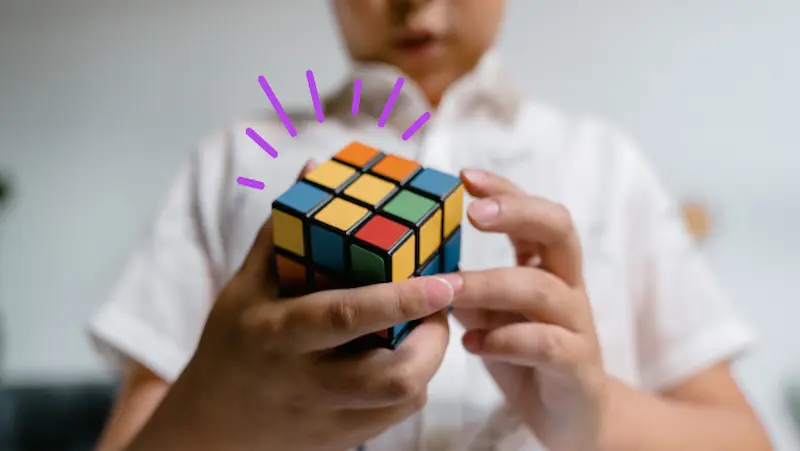
Create a Puzzle Corner
Designate a specific area in your home as a “puzzle corner” where your child can engage in puzzle-related activities. Equip the area with a variety of puzzles suitable for their age group.
Encourage them to spend some time each day exploring different puzzles and solving them at their own pace. This dedicated space will not only motivate children to engage with puzzles regularly but also provide a sense of ownership and excitement.
Morning Puzzle Ritual
Kick-start your child’s day with a fun puzzle ritual. Each morning, surprise them with a new puzzle or challenge to solve during breakfast. It could be a simple jigsaw puzzle, a crossword, or a brain teaser.
This activity not only promotes problem-solving skills but also enhances focus and concentration, setting a positive tone for the day ahead.
Puzzle Playdates
Organize puzzle-themed playdates or invite friends over for a puzzle party. Collaborative puzzle-solving promotes teamwork, communication, and social skills. Children can work together on larger puzzles, take turns, and celebrate their accomplishments as a group.
These puzzle playdates create an engaging and interactive learning environment while fostering friendships and a sense of community.
Puzzle-Based Learning
Integrate puzzles into specific subjects or topics your child is learning at school. For instance, if they are studying geography, provide them with a map puzzle where they can match countries, states, or continents.
If they are learning about animals, opt for puzzles featuring different species. By aligning puzzles with their curriculum, children can reinforce their knowledge in an enjoyable and hands-on manner.
Puzzles on the Go
Make use of travel time or waiting periods by having portable puzzles readily available. Carry a small bag or container filled with age-appropriate puzzles, such as Sudoku, word search, or tangrams. Whether it’s a long car ride or waiting at a restaurant, these puzzles keep children engaged and entertained while exercising their brains.
Puzzles as Rewards
Incorporate puzzles into your child’s reward system. Set specific goals or milestones for them to achieve, and once accomplished, offer a puzzle of their choice as a reward. This approach instills a sense of achievement, encourages perseverance, and motivates them to work towards their goals while enjoying the process.
DIY Puzzle Creation
Encourage your child to create their own puzzles. Provide them with art supplies, cardboard, and scissors to design their personalized puzzles. They can draw or paint a picture and then cut it into different shapes to create a unique jigsaw puzzle. This activity fosters creativity, fine motor skills, and problem-solving abilities, all while sparking their imagination.
Puzzle Recommendations and Reviews
In today’s fast-paced digital world, it’s crucial to strike a balance between screen time and offline activities for children. Puzzles have long been cherished as a timeless and educational form of entertainment. They not only stimulate young minds but also promote critical thinking, problem-solving skills, and cognitive development.
However, with a multitude of options available, finding the perfect puzzle for your child can be overwhelming. Fear not, as we have curated a list of the top puzzles for kids, complete with reviews, ratings, and recommended age ranges. Let’s dive into the wonderful world of puzzles and discover the ideal fit for your little ones.
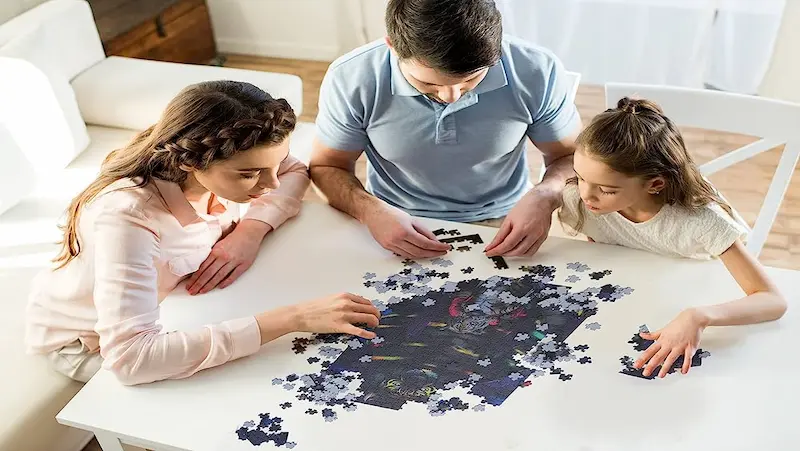
The Importance of Curating Puzzles
With numerous puzzles flooding the market, it can be challenging for parents to identify high-quality options. That’s where curated lists come in. By offering a hand-picked selection of puzzles, parents can save time and make informed decisions based on expert reviews, ratings, and age appropriateness.
Curated lists ensure that each puzzle meets the standards of safety, durability, and educational value, giving parents peace of mind.
Puzzle Selection Process
Our team of experts understands that each child is unique, with varying interests, abilities, and developmental stages. To cater to diverse needs, we carefully select puzzles from a wide range of categories, such as jigsaw puzzles, logic puzzles, 3D puzzles, and more.
We consider factors like engaging themes, visual appeal, complexity, and overall entertainment value. By curating a diverse list, we aim to provide options suitable for toddlers, preschoolers, and older children alike.
Reviews and Ratings
To ensure transparency and provide accurate insights, our curated list includes comprehensive reviews and ratings for each puzzle. Our team rigorously tests each puzzle for durability, educational value, and the level of engagement it offers.
We take into account feedback from parents, educators, and child development experts to provide an unbiased evaluation. The ratings reflect both the enjoyment factor for children and the value they bring in terms of enhancing cognitive abilities and problem-solving skills.
Recommended Age Ranges
Age appropriateness is a critical factor to consider when choosing a puzzle for your child. Our curated list clearly specifies the recommended age ranges for each puzzle, enabling parents to select the most suitable options.
Puzzles designed for younger children focus on basic skills like shape recognition and hand-eye coordination, while those for older children challenge them with more complex patterns, strategies, and critical thinking.
Benefits of Puzzles for Kids
Puzzles offer a myriad of benefits beyond mere entertainment. They encourage children to think critically, enhance their concentration and focus, develop spatial reasoning skills, and improve fine motor skills.
Puzzles also promote patience, persistence, and a sense of accomplishment when the final piece is put in place. By engaging in puzzle-solving activities, children acquire essential life skills that extend beyond the realm of play.
Conclusion
In conclusion, puzzles offer a plethora of benefits for children, making them an ideal addition to their daily routine. By summarizing the key points, it becomes evident that puzzles promote cognitive development, enhances problem-solving skills, foster creativity, improve concentration and patience, and facilitate social interaction.
These advantages make puzzles a valuable tool for parents seeking to provide their children with a fun and educational experience.
Firstly, puzzles stimulate cognitive development by engaging various areas of the brain. They encourage critical thinking, logical reasoning, and spatial awareness, which are crucial skills for academic success. Additionally, puzzles challenge children to use their memory and improve their ability to retain information.
Furthermore, puzzles enhance problem-solving skills. As children manipulate the puzzle pieces and search for solutions, they learn to analyze patterns, make connections, and devise strategies. These problem-solving abilities are transferable to real-life situations, equipping children with valuable skills to tackle challenges effectively.
Puzzles also foster creativity. They allow children to explore different possibilities, experiment with colors and shapes, and think outside the box. This creative engagement nurtures imagination and encourages innovative thinking, which can be beneficial in various aspects of their lives.
Incorporating puzzles into a child’s routine improves concentration and patience. Solving a puzzle requires sustained attention and the ability to persevere until completion. By practicing these skills, children develop focus and resilience, which are essential for success in academics and other activities.
In conclusion, the incorporation of puzzles into a child’s routine offers a multitude of benefits. They contribute to cognitive development, enhance problem-solving skills, foster creativity, improve concentration and patience, and facilitate social interaction.
By encouraging parents to include puzzles in their children’s daily activities, we empower them to provide a fun and educational experience that promotes holistic growth. So, let’s embrace the power of puzzles and watch our children thrive both intellectually and socially.
Discover the power of puzzles and unleash creativity with BrightChamps’ programming classes for kids and python for kids. Our interactive sessions offer a stimulating learning environment to develop problem-solving skills and ignite a passion for coding. Join us now for an exciting journey into the world of programming!
To get your hands on more such educational and free resources on coding for kids, robotics courses for kids, game development, etc., do check out the Brightchamps Page now!
Frequently Asked Questions
A1. Puzzles enhance cognitive skills, improve problem-solving abilities, and promote critical thinking.
A2. Puzzles encourage logical thinking, strategy development, and spatial reasoning, fostering problem-solving abilities.
A3. Kids’ puzzles are available for various age ranges, starting from toddler puzzles for 1-2-year-olds to more complex ones for older children.
A4. Yes, puzzles are designed to match the developmental stages of children, offering age-appropriate challenges and complexity.
A5. Parents should consider their child’s age, interests, and skill level when selecting puzzles, ensuring they provide an appropriate level of challenge.
A6. Start with simple puzzles, gradually increasing the difficulty. Provide guidance and praise to maintain their interest and motivation.
A7. Yes, puzzles stimulate brain development, improve memory, and concentration, and enhance cognitive skills in children.
A8. Ensure puzzles have non-toxic materials, no small parts that can be swallowed, and age-appropriate safety standards for the child’s age group.
A9. Parents can create a dedicated puzzle time, offer rewards or incentives, participate in puzzle-solving together, and make it a fun and engaging activity.
A10. High-quality kids’ puzzles can be found in toy stores, online marketplaces, educational supply stores, and specialty puzzle retailers.

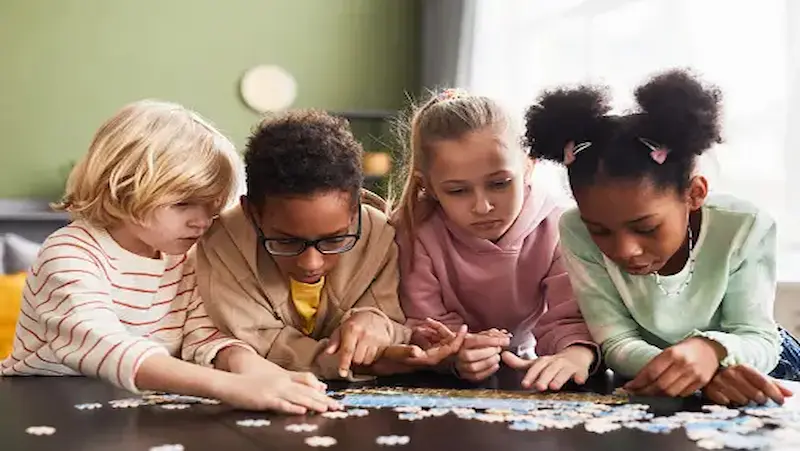
 We are an army of educators and passionate learners from BrightChamps family, committed to providing free learning resources to kids, parents & students.
We are an army of educators and passionate learners from BrightChamps family, committed to providing free learning resources to kids, parents & students.








